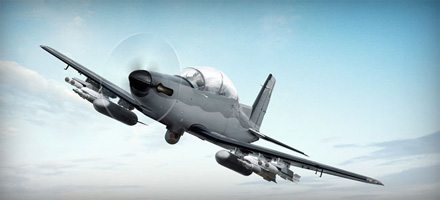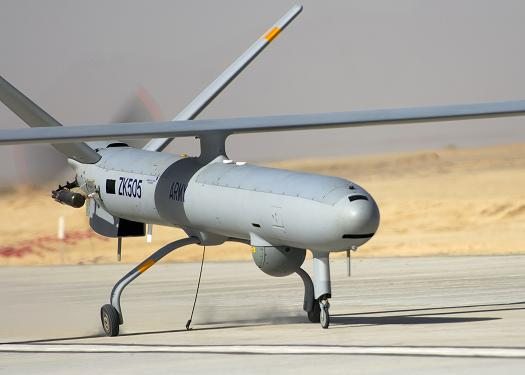Sometime in the next few months, the U.S. Air Force will make a critical acquisition decision directly tied to the changed nature of the threat and the service’s relevance in this changed environment. It certainly will not be the largest or most expensive decision. But it will be extremely significant in terms of future Air Force capabilities and the capacity to be part of the Joint Combined Team required to build partnership capacity.
The acquisition in question is for the Light Attack Armed Reconnaissance Aircraft (LAAR). Along with the Light Mobility aircraft, the LAAR will be the U.S. Air Force’s primary irregular warfare platform. The LAAR will complement the Air Force’s fleet of advanced, fixed wing platforms. Unlike jet fighters, the LAAR will be propeller-driven, fly relatively slowly, be inexpensive to operate, be able to operate from austere forward air fields and loiter for a significant period of time.
The requirements are for a two-seat turboprop capable of flying up to 30,000 ft, with an armored cockpit and engine compartment. The LAAR will carry a cannon and be able to deliver two 500-lb bombs, 2.75-inch rockets and rail-launched munitions. It will be equipped with advanced sensors and targeting systems and a data link to transmit pictures and other information to ground forces.
Current plans are to acquire between 55 and 100 LAAR. Because of its unique characteristics and relatively low procurement and operating costs, it is expected that a number of partner countries will also acquire this aircraft. By operating the LAAR itself, it is believed that the U.S. Air Force will be able to work more closely with and help partner air forces train and develop.
There are two candidate aircraft for the LAAR mission. One is the U.S.-designed and manufactured Hawker Beechcraft AT-6. Lockheed Martin is on the team to provide integrated avionics and sensor systems. The AT-6 is a variant of the T-6 primary trainer currently used by the U.S. Air Force and Navy as well as a number of other countries, including the new Iraqi Air Force. The other is the A-29 Super Tucano built by the Brazilian company Embraer (with the U.S. company Sierra Nevada).
I was on active duty when the requirement for a new primary trainer emerged in the early 1990s. The program was known as the Joint Primary Aircraft Training System (JPATS). At that time the idea of using a turboprop aircraft was seen by many as a step backwards for the Air Force. While not part of the acquisition team or process, because of my operational experience in trainers, fighters and mobility aircraft, I was invited to fly several of the aircraft in the competition. I was impressed by the performance and suitability of the T-6 for the training role. Selected by the Air Force and the Navy, the T-6 has proven to be reliable, easy to maintain and a simple aircraft to learn to fly.
These same features would apply to the AT-6 variant. The T-6 has relatively low maintenance costs. The choice of the AT-6 also would realize life cycle cost savings because of the ability to leverage the existing supply chain in place to support the T-6. Low operating costs and ease of maintenance are important when operating from remote and austere airfields.
Since retiring I have continued to actively fly experimental and general aviation aircraft. As a result I was recently invited to fly the AT-6. The AT-6 not only makes sense because of the U.S. Air Force’s prior and continuing experience with the T-6 trainer, but also because the highly capable targeting system in the aircraft is a version of the system Lockheed Martin installed in the A-10 as part of that aircraft modernization program. U.S. pilots and maintainers would not have to learn how to fly or support a different aircraft in order to train foreign air force personnel. That saves time and money, both precious commodities in today’s military.
While the competition should be decided on which aircraft best meets the requirement, there are other considerations. The Super Tucano was a losing competitor in the original JPATS competition. The choice is between a U.S. designed and built aircraft and one made overseas. This makes it a choice between around 1,400 U.S. jobs in the United States with the AT-6 and just 50 to assemble Super Tucanos.
Additionally, some question the Brazilian Government’s partial ownership of Embraer. How concerned should we be about the ability of another country to refuse to allow Embraer to supply the Air Force with spares for the Super Tucano if a future government decides they do not approve of how the aircraft is being used?
The United States needs and deserves an Air Force second to none. In the recent past the U. S. Air Force has been criticized for its lack of attention to the low end of the conflict spectrum. Making the right decision on an aircraft to fulfill the Light Armed Attack Reconnaissance mission will be critical to the Air Force’s capability to contribute to Joint/Combined operations and training foreign air force personnel in the future.











